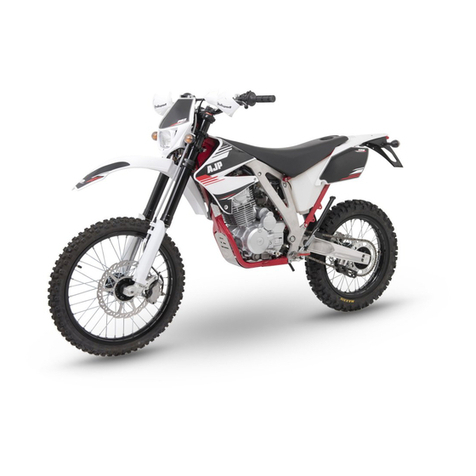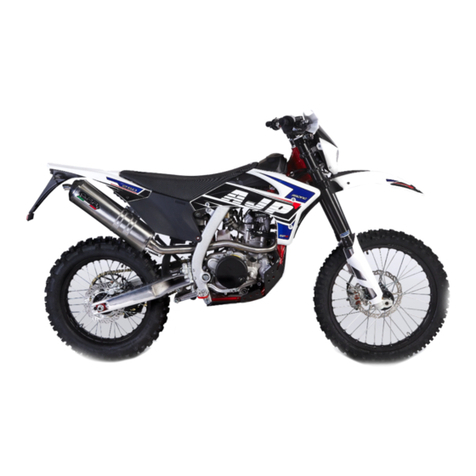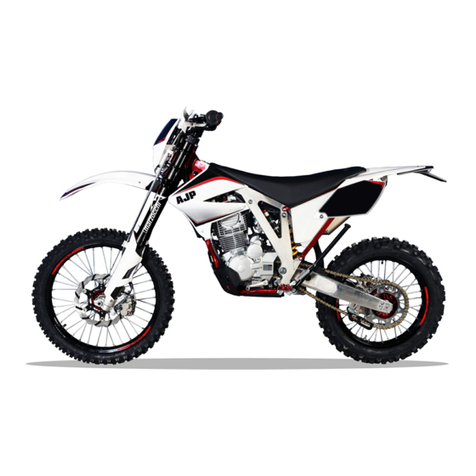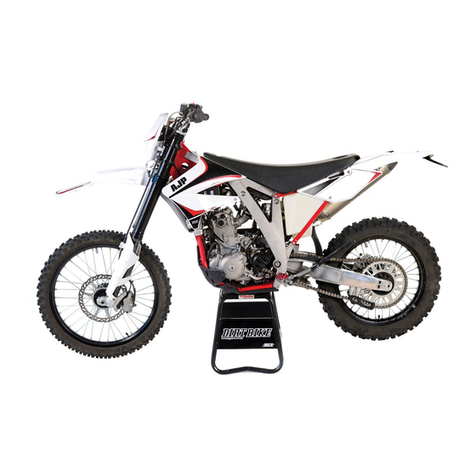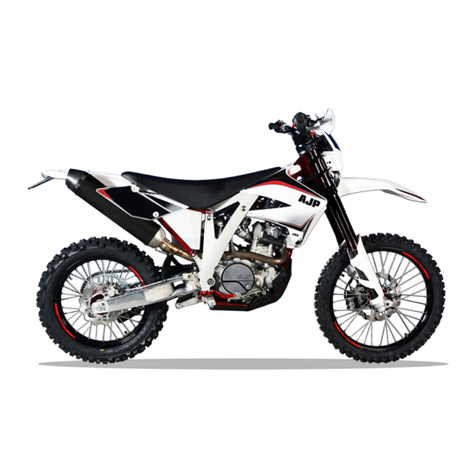! CAUTION !
Because of the transparent fuel
tank, there is not fuel indicator or
light warning! Control fuel level
when you start the motorcycle and
when you are riding for some time!
CHOKE KNOBCHOKE KNOB
PR4 125 and 200 carburettor is
equipped with a choke system to
provide easy starting when the engine
is cold. When the engine is cold, pull
the lever up; it has two positions: the
first (1) is for when engine temperature
is more than 20º; the second (2) is for
when engine temperature is below 20º.
Choke works best when throttle is on
closed position. When the engine is
warm- above 40º- you do not need to
use choke for starting (0).
PR4 125 and 200 carburettor is
equipped with a choke system to
provide easy starting when the engine
is cold. When the engine is cold, pull
the lever up; it has two positions: the
first (1) is for when engine temperature
is more than 20º; the second (2) is for
when engine temperature is below 20º.
Choke works best when throttle is on
closed position. When the engine is
warm- above 40º- you do not need to
use choke for starting (0).
KICK STARTER LEVERKICK STARTER LEVER
PR4 125 and 200 are equipped with a
kick-start lever, just in case electric start
fails. Kick-starter lever is mounted on
the right side of the engine and its
upper part can be swivelled. To be
actuated it should be rotated outside.
PR4 125 and 200 are equipped with a
kick-start lever, just in case electric start
fails. Kick-starter lever is mounted on
the right side of the engine and its
upper part can be swivelled. To be
actuated it should be rotated outside.
! WARNING !
If you want to start engine, make
sure you always wear rigid footwear,
like motorcycle boots, in order to
avoid injuries. You might slip of the
kick-starter or engine may kick back
and hit your leg very strongly!
Always kick kick-starter briskly all
the way without opening the throttle;
if you don’t do it with enough
momentum and with throttle open,
kick back hazard will increase!
! WARNING !
Be sure kick-starter lever is returned
to its home position after starting the
engine.
An improperly retracted kick-starter
lever can interfere with rider control!
GEARSHIFT LEVER
PR4 125 and 200 have a 5-speed
transmission. Shift lever is mounted on
the left side of the engine. The position
of the gears is shown in the illustration.
Neutral is located between first and
second gear.
2
To shift properly, pull the clutch lever
and close he throttle at the same time
you operate gearshift lever. Lift the
lever to up-shift and depress to
downshift.
1
0
REAR BRAKE PEDAL
The foot brake pedal is disposed in
front of the right footrest. Depressing
the rear brake pedal will apply the rear
brake.
PR4 User’s manual Page
7






